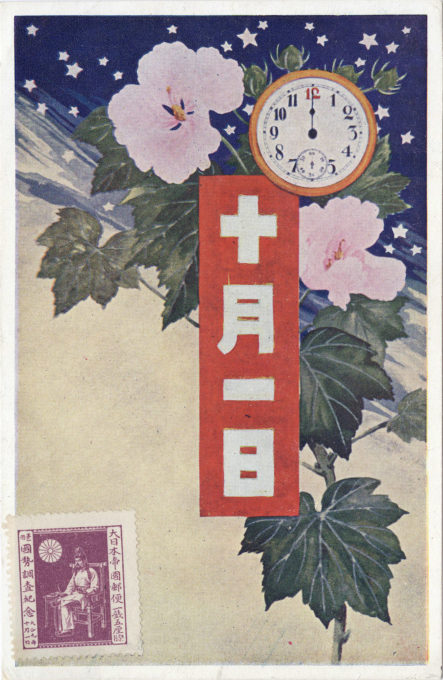
First National Census (October 1, 1920) commemorative postcard, 1920. The first official census of Japan in the modern era established a population of 55,963,053 in Japan-proper and 78,208,378 across the whole of the Empire. Tokyo was its largest city, with a populaiton of 2,173,201.
See also:
National Census commemorative postcards, 1920 & 1935.
“When the shoguns ruled Japan, a day had twelve hours. Each hour was named after one of the Chinese Zodiac animals, so dawn was the Hour of the Rabbit, and dusk was the Hour of the Rooster. Noon was Mid-Horse, and the Hour of the Tiger was just before sunrise, when journeys began and lovers left each other.
“And in Edo the hours changed with the seasons: a winter daytime hour was much shorter than a summer daytime hour. A night hour was long in winter, and brief in summer.
“Then, in 1872, the Emperor Meiji abolished the old clock and brought in timekeeping and calendars used in the United States and Europe. ‘Hereafter, day and night will be equal.’ No longer did clocks adapt to the seasons, the weather, and the tides. The moon had no connection with the beginning of the month anymore. New Year’s Day fell in mid-winter, not the beginning of spring. Nothing is the way it should be. Time was torn away from nature.
“The government announced that no longer would temple bells sound the hours; that was forbidden. Time would be told with the noonday gun, fired from the palace.
“There were riots over the changes, riots which the government quickly put down.”
– The Bells of Old Tokyo: Meditations on Time and a City, by Anna Sherman, 2019

